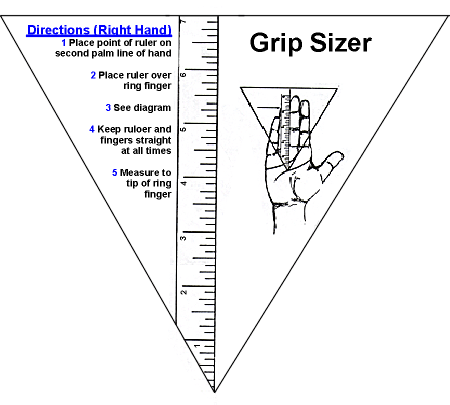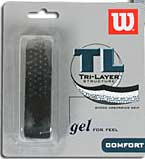<% ns_puts [mkm_getnavbar] %>
by Jim McLennan and Monty Basnyat
Building Blocks of Tennis: Grips are the Cornerstone
The magic of a tennis lies in the perfectly met ball. Struck precisely in the sweet spot, the ball flies off the strings. Power without effort. Swinging slowly yet hitting hard. Though none of us hit all our shots so "sweetly", the fun is in that perfect hit. This point of contact between racquet and ball are truly where the "rubber meets the road.
|
|
The specific way you hold the racquet will determine where contact occurs and how contact feels. Grips determine your style, your ability to spin the ball, and ultimately the level of proficiency you achieve. Each of the three distinct shots in tennis, the volley, the groundstroke, and the serve is defined by the speed of the incoming ball, the length of swing, the speed of racquet, and the firmness of the grip.
When volleying at the net, the ball has the greatest incoming speed. A short blocking action is all that is required to take advantage of this energy. A firm grip is needed to "win this collision".
At the baseline, the bounce of the ball reduces incoming speed. A longer and faster swinging action is necessary to give the ball the zip needed. A firm grip is still required, but the speed and momentum of the swinging racquet enables you to win this collision.
When serving, the ball during the toss has no significant speed and adds little to the power the serve. Racquet speed is key. The longest and loosest swing is best. In this instance, weakening the grip increases racquet speed.
- Eastern Forehand
- Semiwestern Forehand
- Full Western Forehand
- Continental Forehand
- Eastern and Two Handed Backhands
- Service and Volley Grips
Measuring Grip Size
One question often asked at the pro shop is "What size grip should I use?" Although the best answer may be whatever feels comfortable, the diagram below provides a simple method of determing an appropriate measurement. Use it as a starting point.

Last Updated 9/1/98. To contact us, please email to: webmaster@tennisone.com
TennisONE is a registered trademark of TennisONE and SportsWeb ONE; Copyright 1995. All rights reserved.


